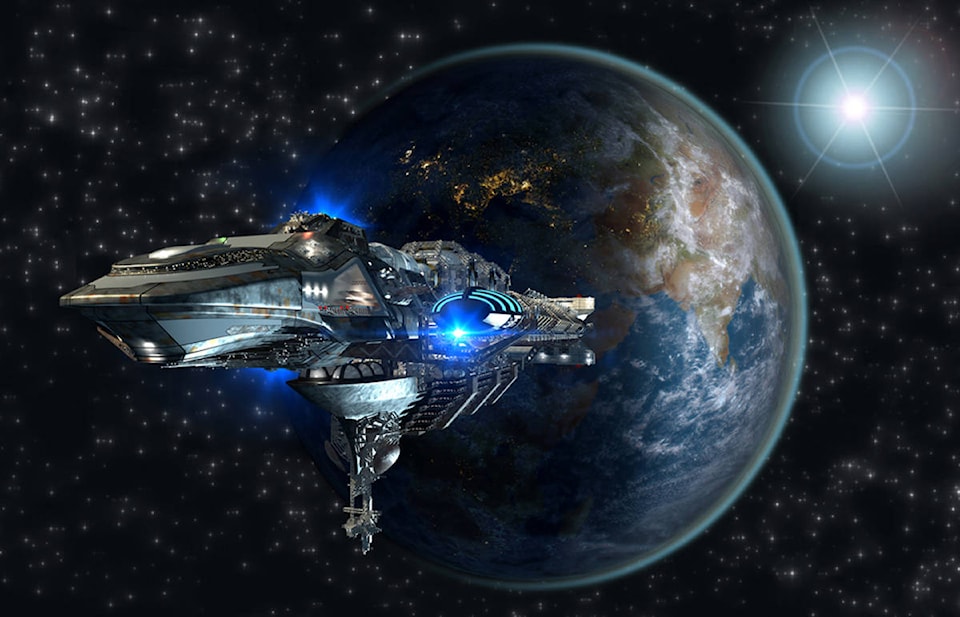Gwynne Dyer
Want to be cheered up at the end of this benighted year? Okay, how’s this? It’s starting to look like interstellar travel may be possible in a time frame that would be manageable for human beings.
No, it’s not a cure for cancer. But we know that we are bound to find that eventually, so long as our civilisation is not destroyed by war or global warming or a random asteroid strike. Until very recently, our understanding of science told us that travel even to the nearest stars will never be possible.
That may still be true, for the answers are not all in yet. But last April the US National Aeronautics and Space Administration gave James Woodward and the Space Studies Institute a Phase 2 grant under the NASA Innovative Advanced Concepts programme.
They got a Phase 1 grant in 2017 to work on their proposed space drive. They made enough progress to keep NASA happy and themselves credible, and they have now been funded to test new designs that increase the thrust produced by their Mach Effect Gravity Assist (MEGA) drive. If that scales up satisfactorily, we will one day be able to build spaceships that go to the stars.
I must admit that I really enjoyed writing that last line, for all my life I have been told that interstellar travel is only science fiction. Real space flight is ruled by Russian scientist Konstantin Tsiolkovsky’s classic rocket equation of 1903, which says that a rocket can get into space by expelling enough of its mass (fuel) at high velocity, but also says that the payload and/or the speed is strictly limited.
More payload or more speed is possible, but only by burning more fuel. You must carry that fuel all the way from launch, which makes the vehicle heavier, which requires more fuel, and so on.
The ‘tyranny of the rocket equation’ is what makes space flight so expensive, and interstellar travel by rocket impossible. For a manned spaceship to reach the nearest star (Proxima Centauri, 4.2 light years), slow down again when it gets there, and do it all within one human lifetime, it would have to burn an amount of fuel roughly equal to the total mass of the Sun.
The fuel is the problem, not the distance. If you didn’t have to bring the fuel with you, sending a 400 kg. payload to Proxima Centauri and putting it in orbit around the most Earth-like planet would require a few years’ acceleration at a modest 1g, a maximum speed of 0.4c (four-tenths of light-speed, so no major relativistic effects), and a few years’ deceleration at the far end. It would arrive in around 20 years.
All recent proposals for interstellar flight have therefore abandoned rocketry and assumed ultra-light vehicles that carry large sails and are pushed by Earth-based lasers or by the solar wind. Two problems: the push dies away before they have travelled even one light-year, and they have no way of stopping at their destination.
So along comes Dr James Woodward, who published his first peer-reviewed article on the Mach effect in 1990, and Dr Heidi Fearn, his colleague at California State University, Fullerton. They worked on the theoretical physics of the Mach effect, they built miniature models of a space drive that doesn’t need to burn a propellant and tested them, and gradually the space community began to take them seriously.
NASA is certainly taking them seriously now. Contrary to what some of their critics claim, what they are doing does not violate fundamental physical laws like ‘every action must have an equal and opposite reaction’. However, it does run contrary to our daily experience of those laws by exploiting some of the more arcane aspects of quantum physics.
I’d explain the Mach effect in greater detail, but I barely understand it myself. Suffice it to say that their MEGA drive uses electricity to produce mass fluctuations within a block of metal, which in turn propels the drive forward without burning fuel. What is it pushing against? All the rest of the mass in the universe.
This isn’t a sure thing. There is still controversy over whether the ‘push’ is real, or just an electrical or magnetic effect that creates a false positive. But NASA is willing to spend money on it, and a lot of other scientists are now following up on Woodward’s and Fearn’s work.
It would open the doors to the rest of the universe for us. Exploration, colonisation, unlimited resources, perhaps contact with other intelligences – all of that becomes much more possible than it would be if we must remain forever confined to this one small planetary system. And of course it would make getting around this system a great deal easier: the Moon in four hours, Mars in 2-5 days, Jupiter in 7-8 days.
How’s that for (potentially) good news?
Gwynne Dyer’s new book is ‘Growing Pains: The Future of Democracy (and Work)’.
Photo courtesy iflscience.com
